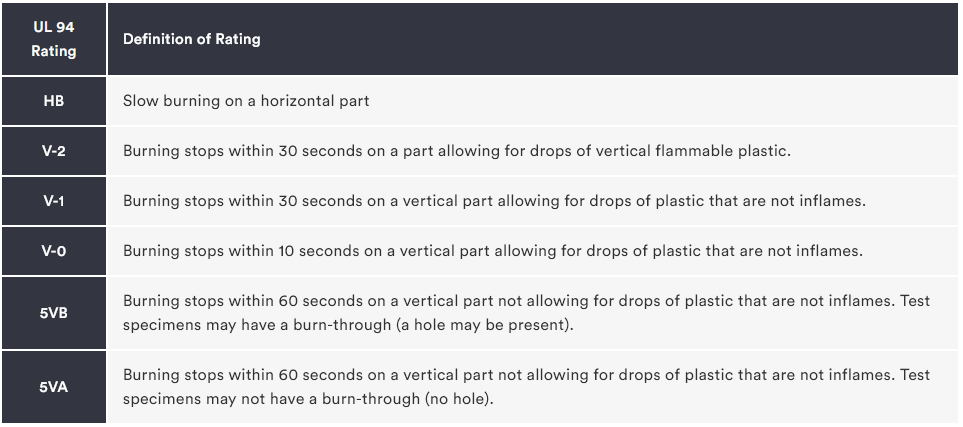Which printed materials would self extinguish?
-
A lot of my printers have PLA and PETG near high current (heat bed, 600W PSU, etc) supplies or devices.
In industry these devices may be subjected to glow wire testing to gain reasonable confidence that components near the wiring would have minimal contribution to a fire caused by a fault. From what I understand this is an attempt to prevent a fire taking hold should a component fail catastrophically (e.g. DC motors often die smokey deaths) and reducing the tendancy of a fire to spread through means such as dripping plastic.
So, what printable materials have good flame resistance, and would be likely to pass glow wire tests if they were subjected to them?
Glow wire testing:
https://www.te.com/content/dam/te-com/documents/appliances/global/glow-wire-testing-appliance-industry-white-paper.pdf -
As a side note I am doing what I can to manage fire safety in the usual ways too. My larger system will have relay isolation of the heaters and separate isolation of the fans and other 24DC devices such as the steppers. Latter mostly so I can power up the machine for setup and simulation tasks without the fans running flat out! Most wires will be sized so that a fault current of up to the fuse rating would not cause the wires rating to be exceeded. Some degree of diagnostic coverage on the isolation circuits will be there if I have spare inputs on the Duet, but it is wired so that if there was a fault on the fan PSU it would take out the heater isolation.
-
I know of but haven't used FormFutura ABSpro Flame Retardant https://formfutura.com/product/abspro-flame-retardant/ -- likely other products exist as well. Overall, I've had good experience with FormFutura products in the past.
-
@DocTrucker I work with aircraft components sometimes. Fire resistance in aircraft is important and the preferred plastics for aircraft use seem to be ETFE (for wire insulation) and Nylon 6,6 (for other applications). So I think nylon printed parts would be worth testing. A search for "nylon filament ul94" returns some hits.
-
@DocTrucker - Adding to DC42's comment. I used to design enclosures for personal computers and servers (and back in the day - "mini computers" the size of a washing machine) and the relevant UL safety standard is UL94. There are several ratings within UL94:

In our designs, we always specified plastics that met the UL94 V-0 criteria. I did a quick search and see a lot of filaments with the 94V-0 rating. They are all labeled flame-retardant. ANd they can be pricey. I saw a roll of flame retardant PLA on amazon with a 94V-0 rating that was $68. Yikes
The plastic composition is adjusted to meet different ratings, usually by adding fillers, sometimes just chemically. I'd expect that the printing parameters might need to be tweaked to optimize with these materials.
-
Thanks for the comments all. I'll take a better look on Monday, little one got turfed out of nursery with a temp. Nothing serious.
-
@mikeabuilder yeah, the TDS are always a good read. The ABSpro I mention above is an ABS/PC blend with retardant additives. It's probably not fun to print unless you have a proper enclosed machine with a chamber heater.
-
@DocTrucker Polycarbonate has good flame retardancy (V-0 and better IIRC) but easy to print grades are often heavily adulterated so you would need to check their data sheets to make sure you're getting what you want.
If it's for a regulated use you should get your parts tested to make sure the part is up to requirement. I say this because some filament manufacturers in the past have used pellet manufacturer's data rather than test actual printed coupons.